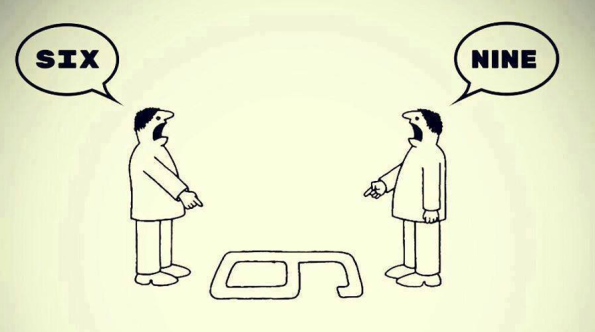Preferential changes, the Moonlighting of our Localization industry
Moonlighting! the TV series was something very special when I was around 18. That TV show was a mixture of drama, comedy, and romance. And it was a blast in the late 80’s early 90’s in Spain. Those days in which Netflix was a totally unimaginable concept, I remember how I waited patiently during on all week for Sunday night to watch on our small TV the never-ending funny fights between Madelyn (Cybill Shepherd ) and David (Bruce Willis). I remember they were always arguing! but actually, they did really like each other! The characters they played were great professionals. Detectives with a great intuition and great knowledge to find out the truth. They discussed a lot, but they liked it.
And I believe that in the Localization industry we have a similar relationship, a relationship of love-hate. A relationship in which from time to time both points of view collide violently defending their positions. Our equivalent characters in our Localization “show” are … the translators and the reviewers. And during the review process, sometimes the relationship reminds to one of the episodes of that TV show.
Review is a necessary step in the process of Localization. It is actually quite necessary as it helps to deliver our clients a better product. However, as necessary as it is, few tasks are as controversial in our industry as the preferential changes in a review. More often than we’d like, there’s a clash between translators and reviewers. More often than we’d like, egos come out and ruthless fight commences to judge which translation is better, the original provided by the translator, or the one a reviewer is checking.
Why does this happen? Where does this confrontation come from?
In my opinion, the main source of conflict between translators and reviewers comes from…. preferential changes. But actually, the main problem is coming from the lack of understanding about what’s a preferential change.
I’ve seen in multiple projects during Localisation QA phases many reports indicating as an error issues such as “The translation of this sentence looks artificial, it’s better if we’d use ….”, “This paragraph here doesn’t flow naturally, I do recommend that we change it to …..”, and once we open this Pandora box, a battle is served, as we are judging very subjective preferences.
This reminds me of below famous image
Who’s is right? I don’t know, nobody knows. It’s all about a matter of perspective; it’s all about how to handle discussions. Look at the picture
Turn it 45 degrees, and the two people looking at it would agree that it doesn’t make any sense. However, in these “fights” between translators and reviewers, it looks like as it both have a monopoly on truth about what’s right or wrong.
I think people from our industry we are truly passionate about what we do, we love languages and we get quite emotional when someone doesn’t share our very same view, and for this reason, we tend to have a greater tendency to disagree.
Now, the answer is how do we facilitate these conversations? How do we approach review phase to avoid ending up with a list of dozens of preferential changes?
In my opinion, this can be done following the following 3 principles:
1. Let’s agree in advance about what’s a preferential change
To avoid a never-ending war on which version is the correct one, if the original version or the revised version, we have to agree asap what it is a preferential change and what it is not. Otherwise, we might even miss a deadline due to a long discussion! I believe we need to start any review process by getting a clear understanding between all parties about what a preferential change is. One possible definition is that a preferential change is something that it’s trying to fix something that it’s not wrong. If we get the reviewer getting words changed by using a synonym or changing the style or even the order of the sentence … then… we are not really fixing something that is wrong, it’s just a preferential change. So before offering a change of a word or the style, it is really important to analyze if actually, the translator did not use that wording on purpose following brand client voice. Educating here is the key, and educate the reviewers about what’s a preferential change and what’s not will be key to have a smooth review process
“A preferential change is something that it’s trying to fix something that it’s not wrong”
2. Let’s define what to do when there’s discrepancy
Ok, let’s be realistic, we are working with humans. And we as humans we are ALL imperfect, this means that it does not matter how clear we are in the definition of what’s a preferential change; we will keep getting preferential changes. Maybe less than if we did not specify what a preferential change is, but in the end, we might end with a report with more preferential changes than we’d like to see. What do we do then in these situations? We have clearly define what a preferential change is, but we keep receiving them. So now what? How do we decide which version is the good one? Well, in this case, I suggest that we define what to do when there’s a discrepancy. We need to work on a process where we agree how we will deal with these situations. Because again, we can not talk for ages about if this word is better than the other. And to avoid that, we need a firewall of the dispute, and that firewall is to agree on what to do when there’s discrepancy. Who should be the judge here? I’m not particularly fond of having one vendor reviewing the other and one of them being the judge, as somehow we could end up in a situation that we do not want; as for example, a vendor introducing more errors than necessary to justify that its services are better than those of its rival. In this situation, I would suggest a client linguistic manager deciding on what’s it right. If we don’t have that role in the client internal team … well, in that case I would suggest we agree with the translator, that’s my very personal view about how to solve the dispute, but I feel the translator generally speaking had a major exposure to the project since the beginning;
3. Let’s define what’s quality!
Nothing is more subjective than the definition of quality. Every time I I heard about quality and what’s quality I remember the wise words from Derek Sivers. He states that quality totally depends on perceptions. Full explanation here, and I agree with him. When it comes to defining quality is very important to set a clear expectation. If there are no clear expectations of the definition of quality, then we should be prepared for ambiguity; and we should prepare ourselves for long conversations about whether our text has the correct quality or not. Hopefully, there’s a way to define quality when we are reviewing texts. Ultimately it’s all about defining the different type of errors and severity. You are not sure about how to define these errors and severity? No worries, our friends from TAUS come to the rescue with the DQF model. This model offers an excellent guide about how to assess quality targeting to differing aspects, from errors coming from not respecting the locale convention to issues related to terminology. Defining in advance our expectations about what’s quality and what’s not, will be fundamental to obtain a premium level of linguistic revision
Going back to my analogy between Moonlighting and the review process I'd like to add that the episodes of the series were self-conclusive, with a beginning and an end. And as much as the charismatic characters played by Cybill and Bruce Willis fought to exhaustion, always, at the end of each episode they forgot their ego to work together and thus solve the case they were investigating. Because in the end, the most important thing was help their customers. A very similar approach should be given to the linguistic review process, and to the fight for preferential changes that arise during the review. Maybe if we focus on the 3 principles I shared earlier translators and reviewers might agree easily. Because at the end of the day, the most important thing is to reach an agreement to help the client and deliver a correct translation, although that sometimes means swallowing pride and working together ... as did Madelyn and David in the mythical Tv show Moonlighting that during so many Sundays entertained me.
Recipe
A simple 3-step recipe to end once and for all with the confusion of preferential changes
What is your opinion on this topic? How do you focus on the issue of preferential changes? How do you determine who is right? Please leave your comments below and maybe we can all improve this step so complex and so full of tension! Meanwhile … have a splendid week!
@yolocalizo
















This feels like a pivotal moment. Localization teams are being asked to support more markets, move faster, use AI responsibly, and show impact, not just output. Expectations are higher than ever, but many teams are still trained mainly for execution. We are strong at delivering localization work, yet we often struggle to move from output to outcome and to clearly explain the impact of what we do.